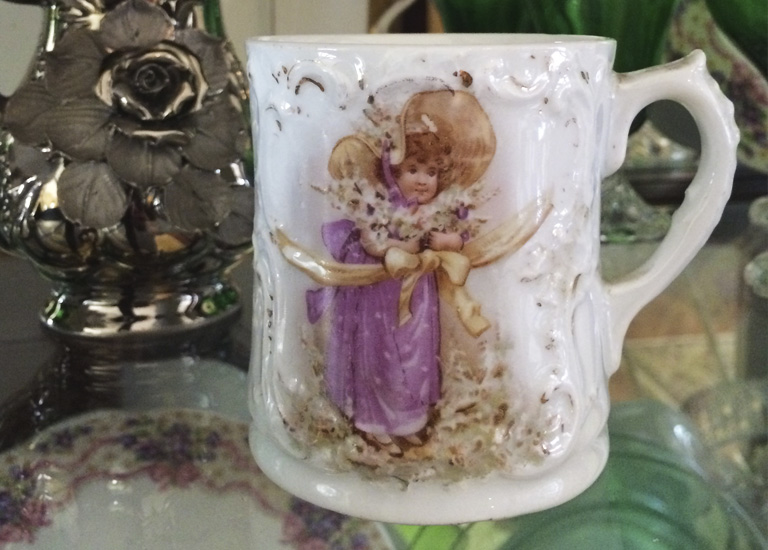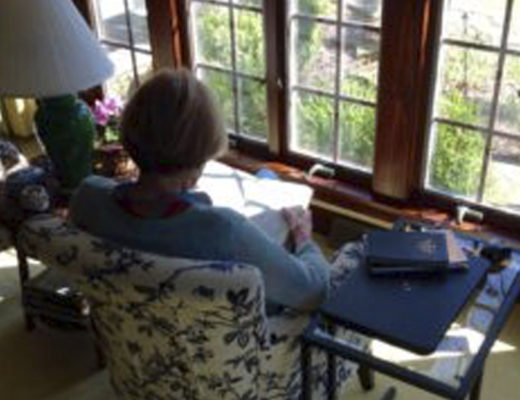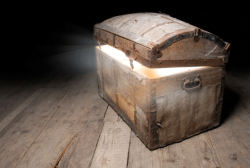 What is one of your treasured possessions? An interviewer recently asked me that question, and at first I wondered if it was a trick. We’re not supposed to “store up for ourselves treasures on earth where moth and rust destroy, and where thieves break in and steal,” are we? I pondered the question for a while and came to the conclusion that I was overanalyzing it. Interviewers are probably just as tired of asking the same old questions as authors are of answering them—so they asked me a new one. And when I think about it, the answer provides a pretty good glimpse into someone’s heart, “For where your treasure is, there your heart will be also.”
What is one of your treasured possessions? An interviewer recently asked me that question, and at first I wondered if it was a trick. We’re not supposed to “store up for ourselves treasures on earth where moth and rust destroy, and where thieves break in and steal,” are we? I pondered the question for a while and came to the conclusion that I was overanalyzing it. Interviewers are probably just as tired of asking the same old questions as authors are of answering them—so they asked me a new one. And when I think about it, the answer provides a pretty good glimpse into someone’s heart, “For where your treasure is, there your heart will be also.”
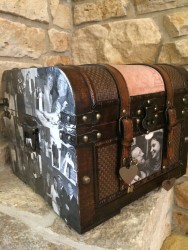 I’ve never been a “jewels and furs” kind of woman (to my husband’s great relief) nor do I treasure a closet full of expensive shoes or name-brand clothing. (Where would I ever wear them?) Yet most of us have things that we treasure for a variety of reasons—letters from a loved one, an heirloom trinket, family photographs, or our child’s plaster handprints—things that we would rescue if our house stood in the path of a forest fire. Their value doesn’t come from any monetary worth, but from what they mean to us. So here are three of my treasures:
I’ve never been a “jewels and furs” kind of woman (to my husband’s great relief) nor do I treasure a closet full of expensive shoes or name-brand clothing. (Where would I ever wear them?) Yet most of us have things that we treasure for a variety of reasons—letters from a loved one, an heirloom trinket, family photographs, or our child’s plaster handprints—things that we would rescue if our house stood in the path of a forest fire. Their value doesn’t come from any monetary worth, but from what they mean to us. So here are three of my treasures:
This is my great-great-grandmother’s “crying cup” from Germany. I remember drinking from it at my grandmother’s house when I was a child, and she told me she remembered drinking from it at her grandmother’s house. I featured it in my novel Eve’s Daughters, and my publisher even included a picture of it on the book cover. Grandma would let me drink from it whenever I was crying or upset, and my tears would “magically” go away. It worked every time. The cup reminds me that our sorrow is easier to bear when it’s shared with someone we love.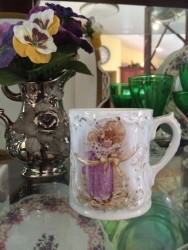
This is my great grandmother’s clock. I’ve seen enough of these clocks in antiques stores to know that it wouldn’t bring $Big Buck$ on “Antiques Roadshow.” When my great-grandfather bought it in 1896, it cost $5 in the Sears Roebuck catalogue. I treasure the clock because it was his gift to my great-grandmother on the day my grandmother was born. I picture great-grandma lying in bed, exhausted after giving birth, holding her new baby in her arms, and in walks her proud husband with a gift for her—a clock! (Doesn’t every new mother long for a clock?) At least she would know what time it was when she woke up in the middle of the night to feed the baby. And maybe he wanted to remind her—and me—how fleeting time is, and that we need to treasure the hours we spend with loved ones.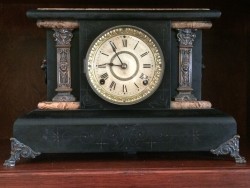
This is an ancient oil lamp more than 2,700 years old. The little clay bowl doesn’t look like much, but it sits on display in a place of prominence in my office. I bought it when I traveled to Israel and worked as a volunteer on an archaeological dig for a month to research my first book, Gods and Kings. The novel retells the biblical story of King Hezekiah, and I wanted a souvenir from his time period— 700 BC. I bought it in an antiquities shop in Jerusalem that is licensed to authenticate and sell artifacts. What amazes me is that the lamp has remained intact for so many centuries. Jerusalem was completely destroyed twice during those centuries—once by the Babylonians in 586 BC and again by the Romans in 70 AD. Yet this simple clay oil lamp managed to survive. It also survived my three active children, numerous curious pets, and at least three long-distance moves. The lamp sits where I can see it every day to remind myself of Jesus’ words: “You are the light of the world . . . let your light shine before men, that they may see your good deeds and praise your Father in heaven.”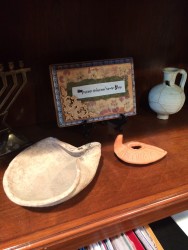
So . . . what is one of your treasured possessions? (It’s not a “trick” question.)

